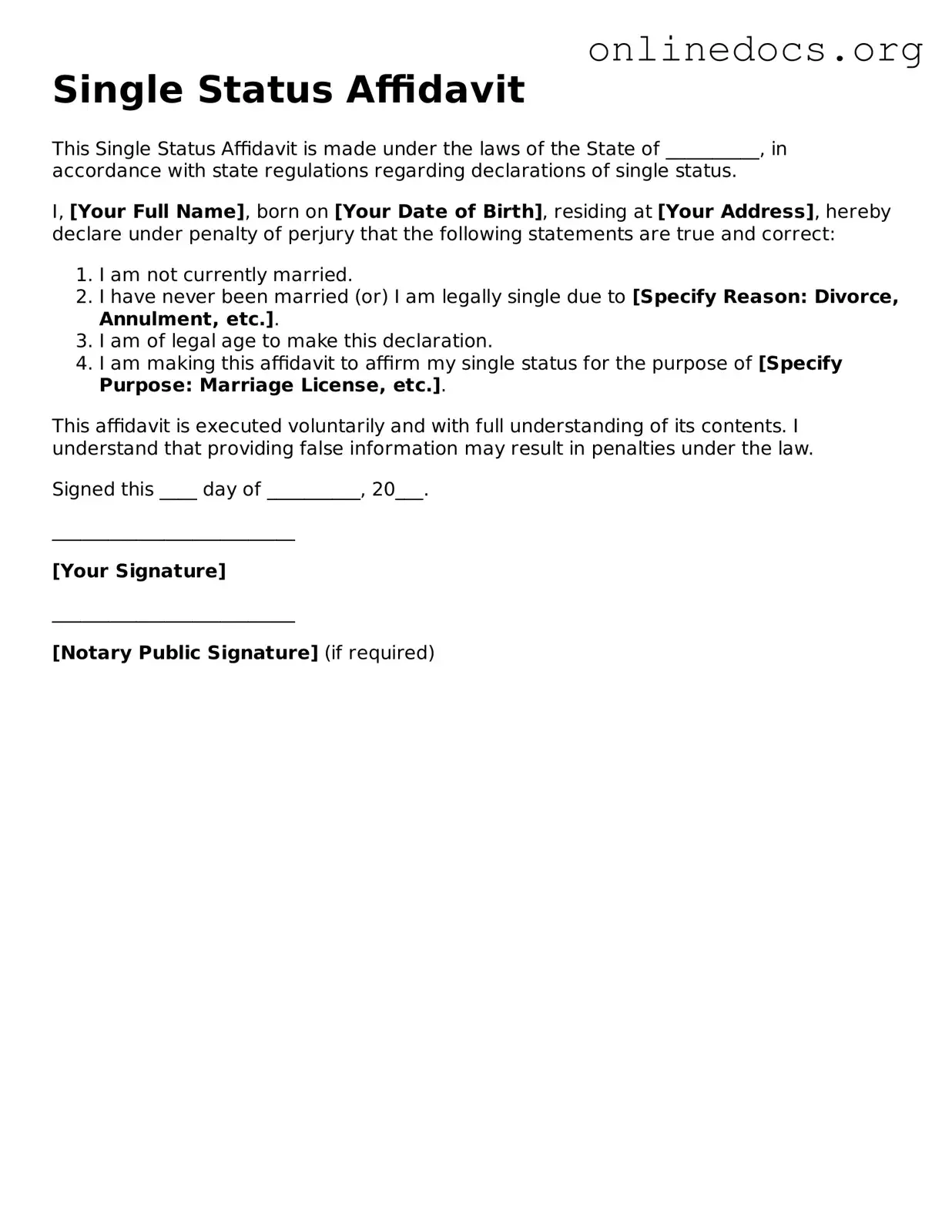The Single Status Affidavit is similar to a Certificate of No Impediment. This document is often required for individuals who want to marry abroad. It serves as proof that there are no legal barriers preventing the marriage. Like the Single Status Affidavit, it confirms that the person is legally free to marry and often requires notarization. Both documents provide reassurance to authorities that the individual is not currently married.
Another document that resembles the Single Status Affidavit is the Declaration of Marital Status. This declaration is often used in various legal contexts, including divorce proceedings or when applying for certain benefits. It states the individual's current marital status and may be required to be signed under oath. Similar to the Single Status Affidavit, it serves to clarify one's marital situation to third parties.
The Affidavit of Single Status is another related document. This affidavit is a sworn statement affirming that the individual is single and eligible to marry. It is often used in conjunction with marriage applications, especially in places where a marriage license is required. Like the Single Status Affidavit, it must be signed in front of a notary public, ensuring its authenticity.
A Marriage License Application often requires similar information as the Single Status Affidavit. When applying for a marriage license, individuals must typically declare their marital status. This application may ask for proof of single status, making it essential to have a document like the Single Status Affidavit on hand. Both documents aim to confirm eligibility for marriage.
When considering important legal documents for marriage, it's also vital to understand the significance of an Affidavit of Gift, which plays a crucial role in the voluntary transfer of property or assets between individuals. This document, like the marriage licenses and affidavits discussed, serves to confirm and protect one’s intentions, particularly when gifts are being exchanged without monetary compensation. For further details, you can explore various resources on Affidavit Forms that help clarify the processes involved.
The Certificate of Freedom to Marry is another document that shares similarities with the Single Status Affidavit. This certificate is issued by some states and confirms that an individual is not currently married. It is often required for those who wish to marry in a different state or country. Both documents serve to verify that a person is free to enter into a marriage contract.
Lastly, the Affidavit of Eligibility to Marry is akin to the Single Status Affidavit. This affidavit is typically required for individuals planning to marry in certain jurisdictions. It affirms that the person meets all legal requirements to marry. Just like the Single Status Affidavit, it often requires a notary’s signature to validate the information provided.
